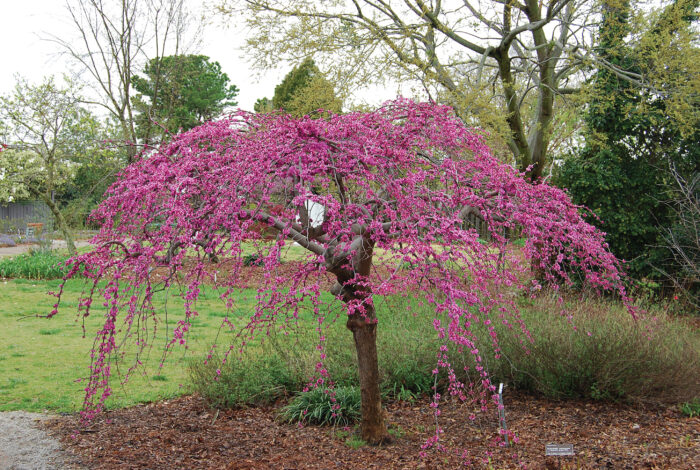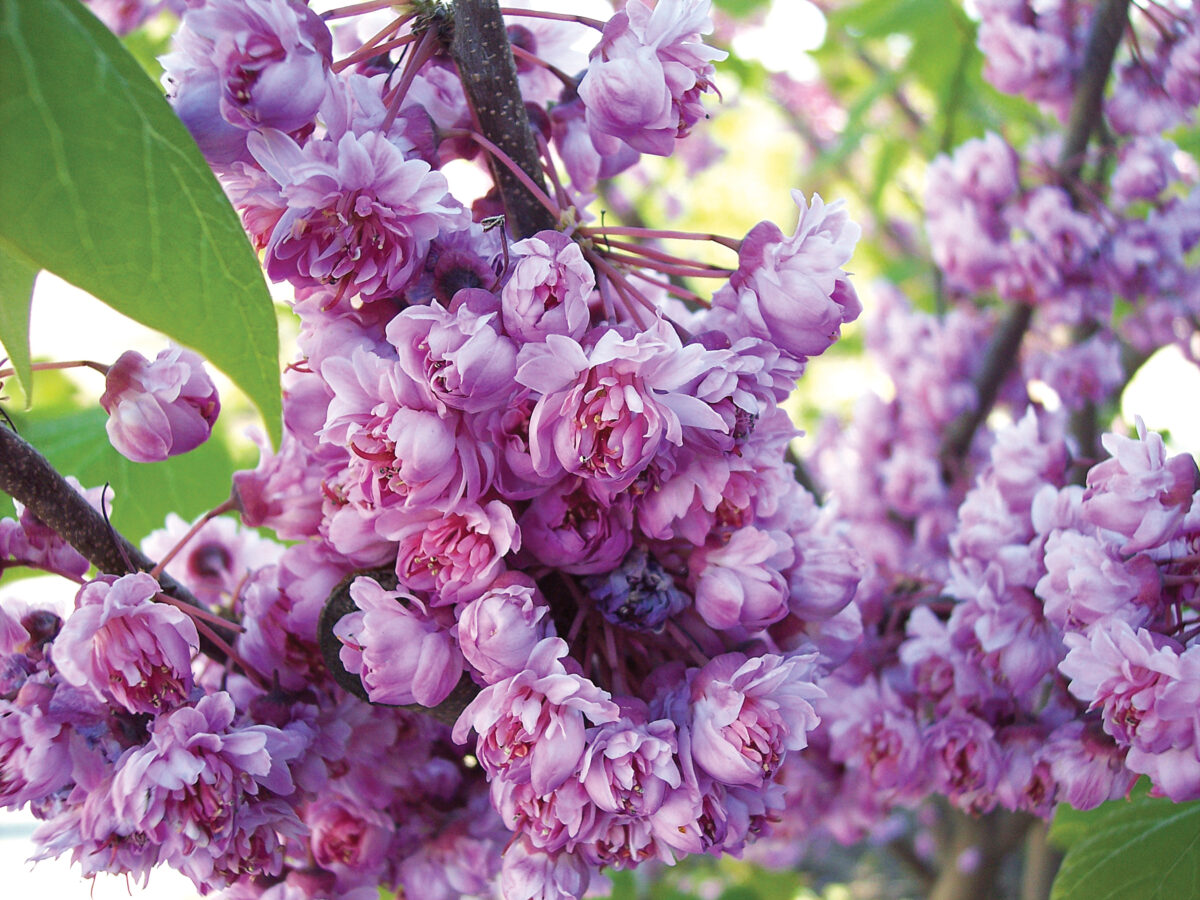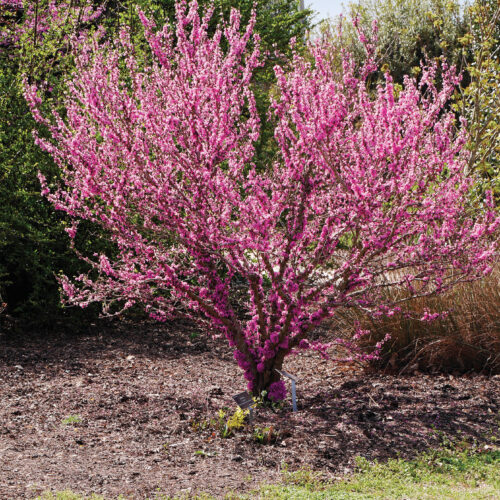Pruning and Staking a Weeping Redbud
If you want a taller, more shapely specimen, follow these steps

Weeping redbuds will generally not grow much taller than the height to which they are staked. When they come home from a nursery, they have usually been staked to about 4 to 6 feet tall. This height may be perfect for you, but I generally find that I wished I had trained my tree to 6 to 8 feet.
Staking a redbud tree
- Drive a stout stake deep enough in the soil close to the trunk but not touching the tree. Your stake should be about as high above the ground as you would like your plant.
- Select a young, pliable branch that is growing as close as possible to directly above the main trunk. You may need to wait until late spring if you purchase your plant in the fall.
- Tie the branch to your stake with a nonabrasive strap.
- Continue tying the branch up the stake until it reaches the desired height.
- Once the stem is rigid enough to support itself, remove the stake.
Pruning a redbud tree
When pruning, always remember the old adage that you can take off more later, but you can’t put a branch back on. Take your time, and step back from the plant frequently to look at your progress.
- Remove crossing, diseased, and dead branches first.
- Always prune to a bud on young stems or to a branch or the trunk. Leave about a half-inch of stem rather than pruning flush with the trunk.
- Remove branches that are growing directly above or below another. While this doesn’t affect the tree’s health, it tends to encourage the development of a more aesthetic form.
- If you do not want low branches once the tree is at its mature height, begin taking some of the largest lower branches out every year or two.
Beautiful Redbud Tree Varieties
The best options for exceptional flowers
Interesting form and showy foliage elevate redbuds to new heights, but the floral display is why most of us grow these lovely small trees. As members of the bean (Fabaceae) family, all redbuds bear flowers that attract pollinators, followed by flat bean pods that can be green or purple when young before turning brown as they mature. The flowers, which are edible and occasionally used fresh in salads, are produced along the stems and branches and even along old trunks like patches of bright lichen, a trait known as cauliflory (from caul, meaning “stem,” and flory, meaning “flowering”).

A fast grower with double flowers
‘Pink Pom Poms’ Eastern redbud (C. canadensis ‘Pink Pom Poms’)
Zones: 5–9
Size: 15 to 20 feet tall and wide
Before its extra-large, heart-shaped leaves emerge, this double-flowered selection is adorned with dense clusters of blooms resembling small damask roses. As a bonus, these flowers are female sterile, so no bean pods will form. This plant is one of the most vigorous redbuds I’ve grown and develops into a nice-sized small tree quickly.

A hotter shade of pink
‘Appalachian Red’ Eastern redbud (C. canadensis ‘Appalachian Red’)
Zones: 4–9
Size: 15 to 25 feet tall and wide
Despite their name, most redbuds have lavender-pink flowers of somewhat varying intensity, but ‘Appalachian Red’ is a distinctly different color. Although still not red, the flowers are very bright—deep pink with no lavender to them at all. As a specimen grows and matures, the floral display becomes increasingly intense. A full-grown ‘Appalachian Red’ stands out like a beacon in a woodland garden.

A nonnative worth mentioning: Compact and seed-free
‘Don Egolf’ Chinese redbud (C. chinensis ‘Don Egolf’)
Zones: 6–9
Size: 10 to 12 feet tall and wide
While I find the seedpods on our native Eastern redbud quite attractive as they dangle from the branches, others consider them a nuisance. On the shrubby Chinese species, there is generally widespread agreement that the pods simply make the plant look messy in fall. ‘Don Egolf’, an introduction from the U.S. National Arboretum named for the legendary shrub breeder, is a sterile form eliminating the possibility of seeds. In addition to sterility, it flowers prolifically on a compact plant that only reaches about 10 feet tall at maturity.
See some more of our favorite redbud varieties here.






Comments
Awesome! I also follow your tips!
Yes, I tried and after growing, it looks good!
I tried this technique but still my tree not growing. I think it takes time more.
Well Done!
Good Job!
Thanks for good illustrations on pruning.
Log in or create an account to post a comment.
Sign up Log in